How To Make Healthy Homemade Peanut Butter
This recipe may contain Amazon or other affiliate links. As an Amazon Associate I earn from qualifying purchases.
Do you want to know how to make healthy peanut butter at home?
So keep reading, and I will tell you how to turn only one ingredient into a creamy smooth homemade spread in just a few minutes.
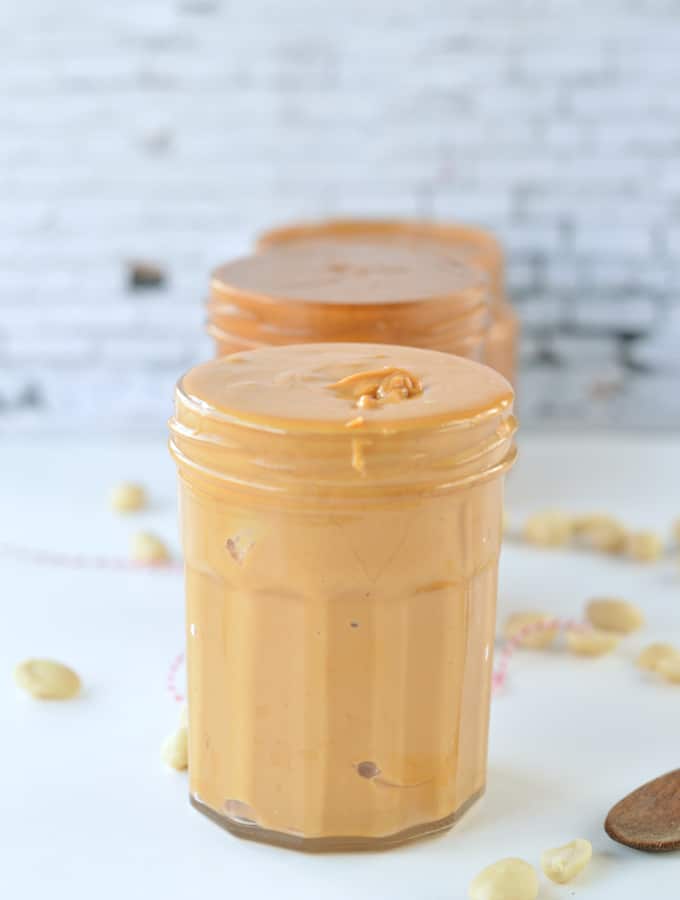
Are you a peanut butter fan? Undoubtedly we are all in love with this popular breakfast spread that can be used in so many ways.
Not only can you eat this vegan and gluten-free staple item by itself or on toast but also make delicious homemade peanut butter cookies.
Ingredients for Healthy Peanut Butter
So let me show you my tips to make delicious sugar-free peanut butter at home with only one ingredient: peanuts.
While all you need to make peanut butter is peanuts, there are a few tips and tricks to turn the precious nuts into a creamy, smooth spread.
First, the choice of peanuts matters.
- Use roasted peanuts rather than raw. Roasted nuts release their oil better. Therefore your spread will be smoother, easier to spread on toast, and it will have a deeper flavor.
- Roast them yourself. This gives you control over time and temperature. It should be noted that peanuts keep more nutrients if roasted below 350°F (180°C). So, buy raw peanuts, skin-on, and roast them at low temperatures (320°F to 350°F or 160°C to 180°C) for a maximum of 10 minutes. They will release their oil and keep most of their nutrients.
- Keep some peanuts with their skins! The skin adds an even deeper nut flavor and a lovely light brown color to your spread. However, if you keep all the skin from your batch of roasted peanuts, it will get very difficult to process. So remove the skin of roughly half the nuts.
How To Make Healthy Peanut Butter At Home
Below you can see the huge color difference between homemade peanut butter made with roasted peanuts with no skin (left) and roasted peanuts with their skin on (right).
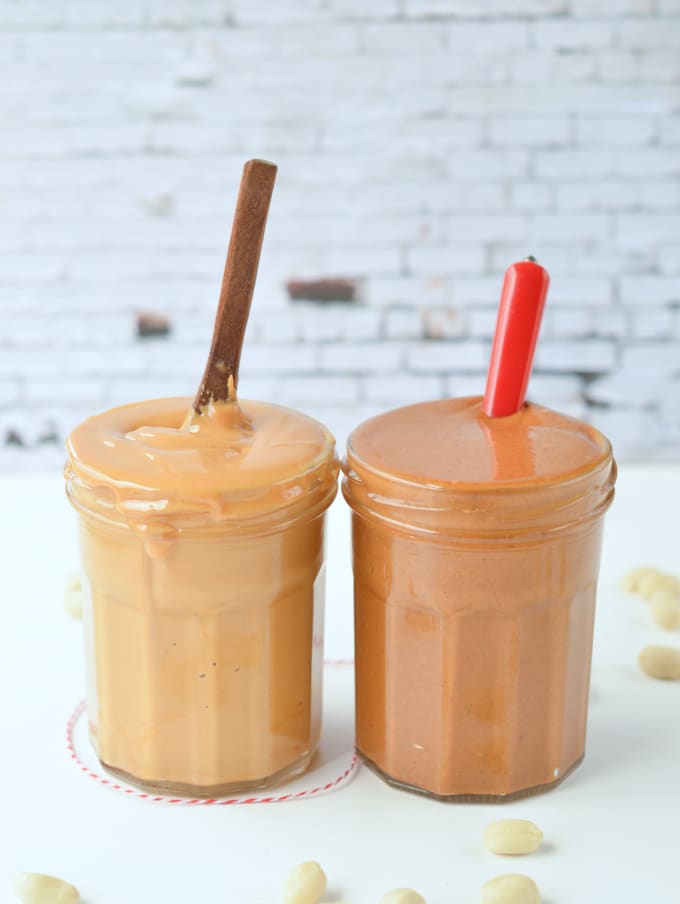
Picking the right equipment
Next, make sure you have the right equipment to turn your nuts into nut butter. There are two options.
1 . Blender. Clearly, not all blenders can crush peanuts into butter. You must have a professional blender with a square base and a stick that helps to move the nuts in the jug. Luckily, my blender creates smooth peanut butter in less than 2 minutes.
2. Food processor. The good news is that most food processors can create smooth nut butter! However, there is one main rule to stick to. You must add enough peanuts to fully cover the blade or it won’t blend properly.
Usually, you need 4 cups of nuts for a large food processor bowl. Note that 4 cups of peanuts give about 2 cups of peanut butter. As you can see below, the longer you process the nuts, the smoother it gets.
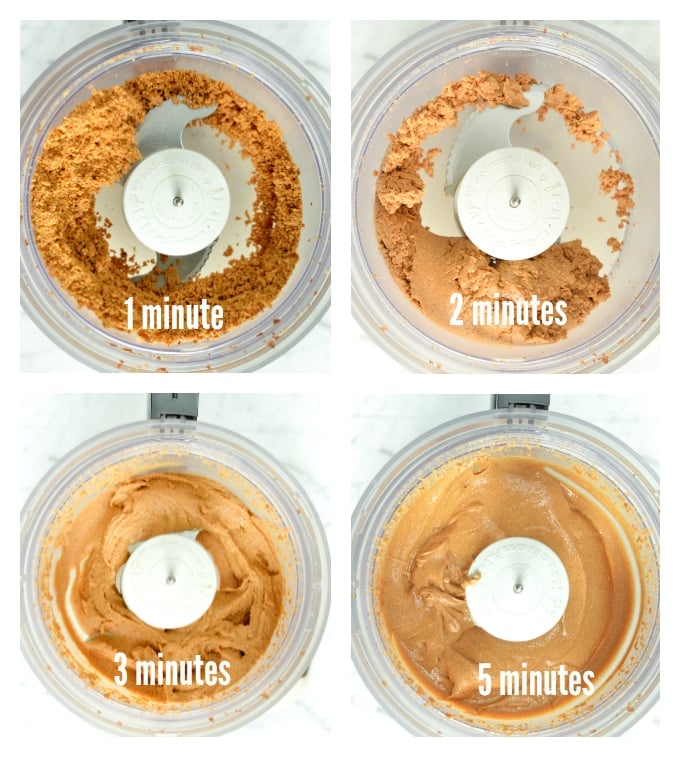
Adding some flavors
You don’t need to add flavor to your peanut spread. A pinch of salt might be all that’s needed for a perfect taste.
However, if you really fancy some flavors, you can add a liquid sweetener such as maple syrup or honey or cocoa powder, but you must know that this will dry out the spread.
Therefore, you will need to balance the texture with the addition of oil or you will lose the smooth texture.
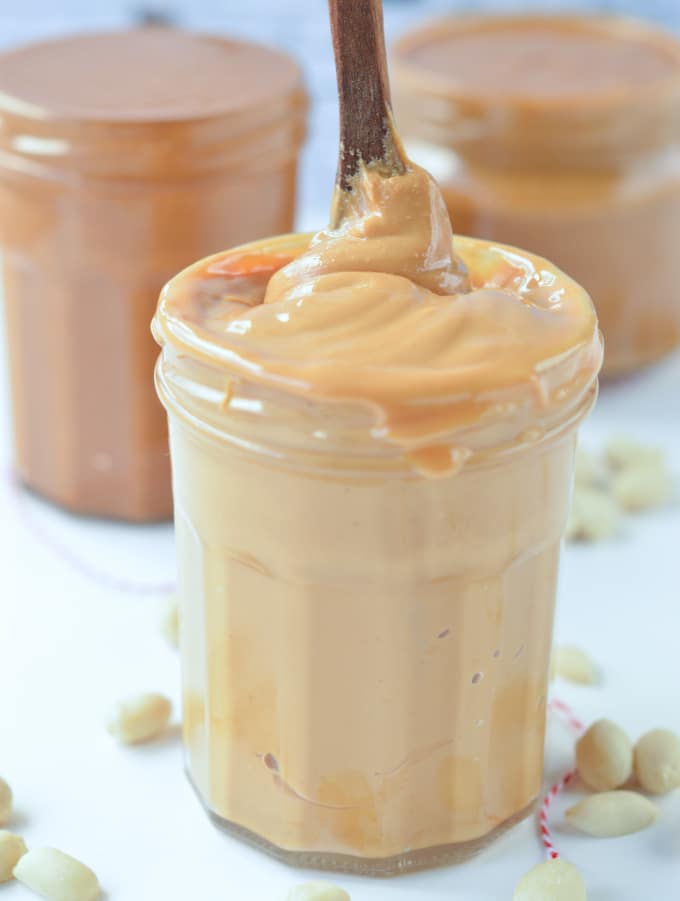
Frequently Asked Questions
So if you love a boost of flavor to your spread, I recommend adding chocolate or cinnamon.
Natural Peanut Butter is excellent for your health as it might help against heart disease, cholesterol, diabetes, and even cancer.
However, any peanut butter with added sugar and added oil is to be avoided.
No, a moderate intake of peanut butter is unlikely to make you fat. In fact, weight gain is in most cases associated with too many calories. It’s not related to only the fat or only the carbohydrates that you eat.
Yes, this recipe works the same to make almond butter or cashew butter.
No, there’s no need to keep peanut butter in the refrigerator.
Unfortunately, most store-bought versions have many additives, starting with sugar, oil, or preservatives, and therefore they are not particularly healthy, and they are not low-carb.
Manufacturers add sugar for two reasons. First, sugar makes you want to come for more, and therefore sugar-loaded peanut butter is consumed in greater amounts.
Second, because sugar is much cheaper and therefore adding sugar reduces the cost of a peanut butter jar, increasing profit or reducing the price that customers pay.
You can find some natural peanut butter in stores, but it’s so easy to make yourself that you have to wonder why you would buy it!
Despite all these benefits, there are some potential risks with peanut butter:
Peanut Allergy: if you are allergic to peanuts in particular if you are coeliac, it’s obviously dangerous to consume peanut butter.
Mineral Deficiency: the high phosphorus content of peanut butter can lead to zinc and iron deficiency.
These risks are easily managed by consuming peanut butter in moderation.
Whether you buy your peanut butter from the store or make it yourself, it is a good source of many essential vitamins and minerals (Calcium, Iron, Potassium, Vitamin E, Vitamin B6, Magnesium, Manganese, and Zinc.
All these may contribute to the following health benefits:
– Lowering Risk of Heart Disease: due to the antioxidants in peanut butter. One serving a day can decrease the risk of heart disease by up to 44% (source)
– Maintain good cholesterol and blood pressure: due to the presence of oleic acid.
– Reduced risk of diabetes: also due to the oleic acid that reduces insulin resistance.
– Cancer-fighting properties: antioxidants like Vitamin E, Vitamin B, and Manganese are thought to prevent cell damage.
– Weight controlling properties: the intake of healthy fats in peanut butter is linked to lower weight gain and even weight loss when well controlled.
Healthy Recipes With Peanut Butter
Here are some of my best recipes to use with your homemade spread. For all my Peanut Butter Recipes, browse my Peanut Butter Recipes.
Did You Like This Recipe?
Leave a comment below or head to our Facebook page for tips, our Instagram page for inspiration, our Pinterest for saving recipes, and Flipboard to get all the new ones!
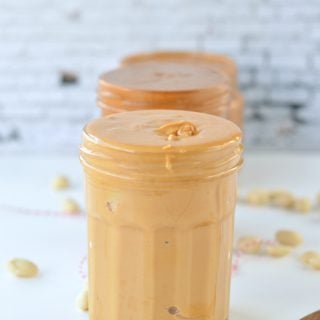
Homemade Peanut Butter
Ingredients
Natural Unsalted Peanut Butter
- 4 cups Raw Peanuts skin on, unroasted, unsalted
- 1 pinch Salt (optional)
Cinnamon flavor
- 1 teaspoon Cinnamon
Chocolate flavor
- 2 tablespoon Melted dark chocolate
Instructions
Roast the Raw Peanuts (skin on)
- Preheat the oven to 350°F (180°C). Spread the raw peanuts onto a baking sheet and roast them for 8-10 minutes or until lightly golden and glossy- you will spot some oil coming out of the peanuts.
- Transfer the roasted peanuts onto a towel, rub until the skin of half the peanuts has been removed. The more skin you keep, the deeper the nutty flavor will be. I recommend rubbing off the skin of at least 2 cups of roasted peanuts to make sure it blends easily. The more skin you keep, the more difficult it is to blend into butter.
Process 1 minute – Total: 1 minute
- Process at high speed until the peanuts form a ground texture – about 1 minute. If the nuts are still warm it will go even faster. Stop and scrape down the sides of the bowl. Now the nuts look like thick dry ground.
Process 1 extra minute – Total: 2 minutes
- Process for 1 more minute at high speed. Stop and scrape the sides of the bowl. Now, your peanut butter starts to come together, forming a sort of butter but still dry and thick, almost there!
Process 1 minute again – Total: 3 minutes
- Process for 1 more minute at high speed. Stop and scrape the sides of the bowl as before. Now, the butter is shiny/glossy, soft but still thick.
Process 1 last minute (or so) – Total: 5 minutes
- Process for a few more minutes – usually less than 2 minutes. Now the peanut butter is forming! It is super smooth, lukewarm, glossy, and ready to spread on toast or to use in the next flavored peanut butter recipes. You should obtain 2 cups of natural unsalted peanut butter with this recipe.
Flavor
- Stir the flavor a the end if desired.
Notes
Storage Instructions
You can store your homemade natural peanut butter in a glass-sealed jar or airtight container in the pantry for up to 3 months. If separation occurs and oil appears on the top, give it a good stir.Tools
Getting Started What Is Keto? Macro Calculator Sweetener Converter Intermittent Fasting Keto Fruits Keto Vegetables Keto Flours Fighting Keto Flu Healthy SweetenersWant My Kitchen Equipment?
Nutrition
Disclaimer
The recipes, instructions, and articles on this website should not be taken or used as medical advice. You must consult with your doctor before starting on a keto or low-carb diet. The nutritional data provided on Sweetashoney is to be used as indicative only.
The nutrition data is calculated using WP Recipe Maker. Net Carbs is calculated by removing the fiber and some sweeteners from the total Carbohydrates. As an example, a recipe with 10 grams of Carbs per 100 grams that contains 3 grams of erythritol and 5 grams of fiber will have a net carbs content of 2 grams. Some sweeteners are excluded because they are not metabolized.
You should always calculate the nutritional data yourself instead of relying on Sweetashoney's data. Sweetashoney and its recipes and articles are not intended to cure, prevent, diagnose, or treat any disease. Sweetashoney cannot be liable for adverse reactions or any other outcome resulting from the use of recipes or advice found on the Website.
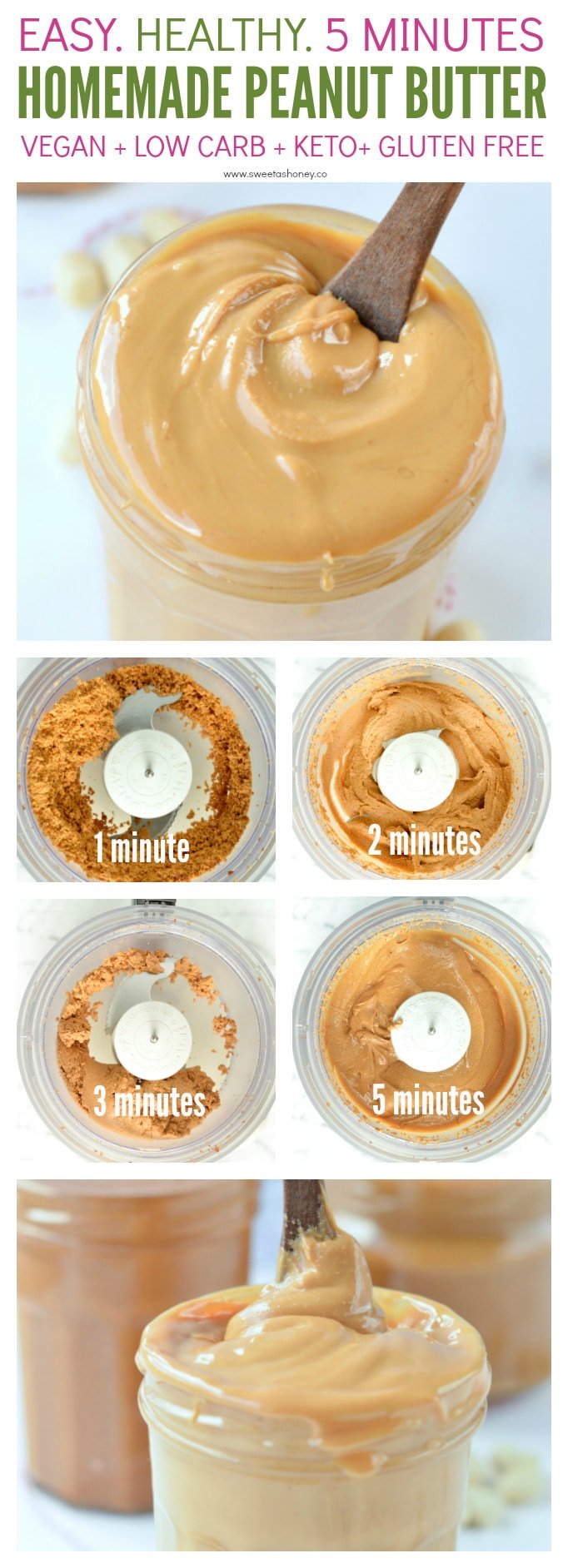
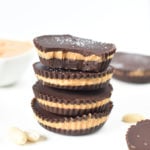
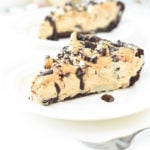
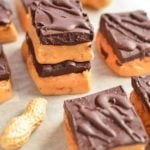

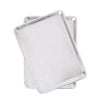
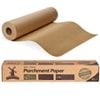
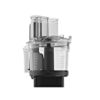
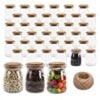

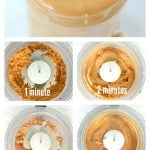
Share this post!
If you enjoyed this post, share it with your close ones!
Leave a comment
What kind of dark chocolate? Like keto dark chocolate 🍫? Like a lily’s dark chocolate bar?
How long do you melt it for?
It would work with both!
Melt it until it’s just melted. Chocolate can cook and form burnt bits when cooked for too long.
I don’t have a powerful blender nor a powerful food processor, so I added a couple of tea spoon of coconut oil to help blend. Nothing beats homemade nut butter!
Great idea!
Hi I’m trying to make peanut butter for my baby and discovered your recipe. I just want to know;i f i store it in a plastic jar will it still be fine as i only have plastic ones at home?
How can l add sodium benzoate in peanut butter?
There’s no need to add preservatives to homemade peanut butter.
You can store natural peanut butter for up to 3 months. Most would have finished the jar way before that.
Is it good for weight gaining?
Well, anything high in calories consumed in large amount will help you gain weight. Peanut butter is high fat and high calories so yes it can help you.
Hello,
I curious as to how long this stays good for on the shelf? I know I probably will eat it all up fast but just wanted to know if you’ve experimented with how long it stays good for.
Since the recipe contains only peanuts the shelf duration is the one of peanuts. Peanuts last up to 4 months in the pantry, then taste vary. Enjoy the recipe, XOXO Carine
I discovered that adding pure vanilla extract really amps up the taste! I use 2 c. unsalted roasted peanuts, 1 t. vanilla, and 1/2 t. sea salt. It is sooo delicious with sliced Fuji apples, which are the sweetest. No oil! No sweetener!
Absolutely lovely! Do you rate it would work the same with any other type of nut such as macadamia or hazelnuts?
Sure it does! Actually, it is even faster to turn macadamia nuts into nut butter! For hazelnuts you can look at my healthy hazelnut chocolate spread recipe for tips. Enjoy! XOXO Carine.
How many carbs per serving and what is a serving? One tablespoon? A teaspoon? Trying to stay within the limits of the keto diet but hard with recipes I don’t know the amount.
The full nutrition panel is in the recipe card after the instructions. This recipe makes 60 servings of 10 grams, one serving contains 103 kcal, 3.8 g net carbs and 0.9 g fiber which means only 2.9 g net carbs per serve.
I am confused, you said to buy roasted nuts , but you gave the recipe for raw. Now i dont know how to make it with roasted nuts.
No the recipe ingredients says to buy raw nuts and I explain how to roast them before processing. However this is not a problem if you buy peanuts that are already roasted simply skip the roasting step! Go directly to step 2, add your nuts to the food processor and process to form your nut butter. It will end up the same. Enjoy the recipe. XOXO Carine.
I prepared it with both raw peanuts and roasted peanuts. It tasted better with roasted peanuts.
Agree! My fav too ! Enjoy the low carb recipes on the blog. XOXO Carine.
This is an awesome recipe/tip. Thanks for sharing. Been on keto for 6 weeks and PB hits the spot. Love the flavored variations.
I am so glad you appreciate the flavored PB option I provided here. I am a PB lover too and the cinnamon one is dream ! Enjoy the keto baking recipes on the blog, XOXO Carine.
This is a very thorough step-by-step process on how to make a delicious peanut butter (and two flavored variations). I do however have a few questions, specifically on storage. After I make this peanut butter, should I store it at room temperature or in a refrigerator? I do not mean it as in a sense of whether or not the peanut butter would stay good or not—it will at room temperature—but rather on whether or not storing it in the refrigerator will prevent any oils from rising up from the peanut butter. Also, if I were to add a little bit of salt to my peanut butter for taste, would I need to add anything to it? Thank you!
Thank you for trying my peanut butter recipe ! adding a pinch of salt is a great idea, simply add at the end of the blending process, 1/4 teaspoon per 2 cups of peanuts sounds great. I never store my peanut butter in the fridge because it gets harder and difficult to spread, plus it doesn’t prevent the oil to separate from the nuts either so I do prefer to store mine in the pantry. I hope this is helpful! Enjoy the low carb recipes on the blog, XOXO Carine.
I love drizzly homemade peanut butter! It’s seriously the bomb dot com – the packaged stuff just doesn’t even compare. I have been trying to talk myself out of buying a food processor for myself, but I think this post really tips the scales… I could have homemade PB all the time! Magical.
Homemade peanut butter is the ebst, and so simple to make ! Enjoy the recipe. XOXO Carine.